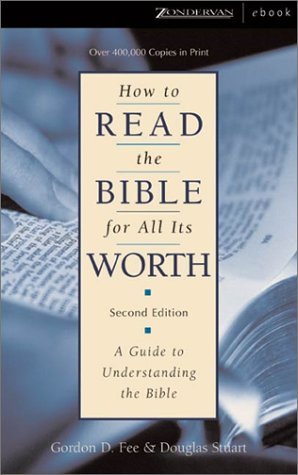

Most ebook files are in PDF format, so you can easily read them using various software such as Foxit Reader or directly on the Google Chrome browser.
Some ebook files are released by publishers in other formats such as .awz, .mobi, .epub, .fb2, etc. You may need to install specific software to read these formats on mobile/PC, such as Calibre.
Please read the tutorial at this link: https://ebookbell.com/faq
We offer FREE conversion to the popular formats you request; however, this may take some time. Therefore, right after payment, please email us, and we will try to provide the service as quickly as possible.
For some exceptional file formats or broken links (if any), please refrain from opening any disputes. Instead, email us first, and we will try to assist within a maximum of 6 hours.
EbookBell Team

4.0
46 reviews 
ISBN 10: 0310373611
ISBN 13: 9780310373612
Author: Gordon D. Fee, Douglas K. Stuart
This book takes a new approach to helping a person read and study the Bible with greater understanding. In thirteen chapters the authors, both professors at Gordon-Conwell Theological Seminary, teach the reader the rudiments of good interpretation for the various types of literature (genres) that make up the Bible. Different biblical genres require different exegetical questions and skills. Introductory chapters show the need for interpretation and give instruction on how to choose a translation. The rest of the book discusses the Epistles, the Old Testament Narratives, the Book of Acts, the Gospels, the Parables, the Old Testament legal portions, the Psalms, the Prophets, the Wisdom books, and Revelation. In each chapter there is an explanation of the nature of the genre and what makes it different from the others, keys for interpreting that genre, and finally a discussion of the hermeneutical questions it raises for today's Christian. In each section on interpretation the reader is taught what one can learn on his or her own without outside help, and then when and how to seek outside help. Part of each chapter helps the reader wrestle with the questions of application. How does a psalm addressed to God over 2500 years ago function as a word from God for today? How does one distinguish between cultural and transcultural matters in the Epistles? Does a biblical precedent serve as a norm for the church for all times? Guidelines for these and many other hermeneutical questions are given throughout the book. - Back cover.
Preface
1. Introduction: The Need to Interpret
2. The Basic Tool: A Good Translation
3. The Epistles: Learning to Think Contextually
4. The Epistles: The Hermeneutical Questions
5. The Old Testament Narratives: Their Proper Use
6. Acts: The Question of Historical Precedent
7. The Gospels: One Story, Many Dimensions
8. The Parables: Do You Get the Point?
9. The Law(s): Covenant Stipulations for Israel
10. The Prophets: Enforcing the Covenant in Israel
11. The Psalms: Israel's Prayers and Ours
12. Wisdom: Then and Now
13. The Revelation: Images of Judgment and Hope
Appendix: The Evaluation and Use of Commentaries Index of Names
Scripture Index
how to read the bible for all its worth
how to read the bible for all its worth pdf
borrow how to read the bible for all its worth
how to read the bible for all its worth review
how to read the bible for all its worth audiobook
how to read the bible for all its worth amazon
Tags: Gordon D Fee, Douglas K Stuart, How to Read the Bible, Guide, Understanding, Bible